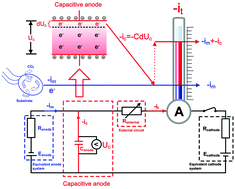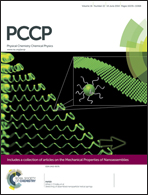Anode modification with capacitive materials for a microbial fuel cell: an increase in transient power or stationary power†
Abstract
Extensive efforts have been devoted to improve the anode performance of a microbial fuel cell (MFC) by using modified carbon-based anode materials, but most of them did not recognize that the power performance measured by the commonly-used varying circuit resistance (VCR) or linear sweep voltammetry (LSV) method was overestimated due to the effect of anode capacitance. Here, we examined and compared the transient power and the stationary power of a series of MFCs equipped with the polypyrrole–graphene oxide (PPy–GO)-modified graphite felt anodes. It was found that noticeable transient power was recorded when the VCR or LSV method was chosen for power measurements. Calculations on the contribution of different sources to the measured maximum power density showed that the discharge of bio-electrons stored in the high-capacitance anode was a dominant contributor, especially when the time duration (for the VCR method) was not sufficiently long or the scan rate (for the LSV method) was not sufficiently low. Although anode modification with capacitive materials can result in the increased stationary power obtained from the fed-batch cycle test, owing to the increases in the anode surface area and the number of bacteria attached to anode, the increase in the transient power was more remarkable.


 Please wait while we load your content...
Please wait while we load your content...